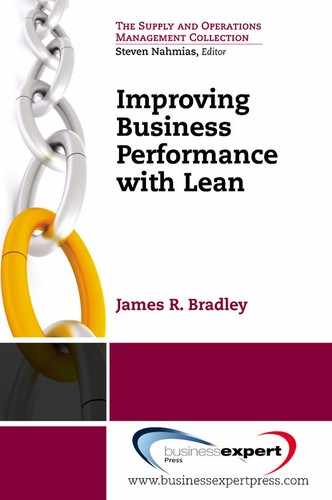Mistake-Proof Processes and Product Designs
Mistake-proofing in its most ideal form is designing a process or product so that mistakes cannot be made. W. Edwards Deming and Joseph Juran were famous for arguing that the majority of defects and mistakes were management’s fault.1 Deming argued that 85% of problems were due to management’s actions, while Juran argued 80%. One might argue for management’s overwhelming responsibility for errors by observing that managers are responsible for a vast majority of the factors that affect quality, such as the quality of incoming material, specification of tooling and equipment, ensuring proper maintenance, providing appropriate information and training opportunities to employees, and ensuring complete work specifications. Even in a system like the Toyota Production System, in which employees are mainly responsible for process improvement, management needs to ensure that employees have time away from their assembly line jobs to conceive and implement those improvements. Mistake-proofing therefore recognizes that a vast majority of workers are trying to do their job properly and that most mistakes occur because the process makes it easy to make mistakes or makes it difficult not to make mistakes. The Toyota Production System uses the term poka yoke for mistake-proofing or error-proofing.2
Mistake-proofing is closely related to visual systems because there is always a visual cue in every mistake-proofing tactic that signals that a mistake is about to be or has been made. However, because the goal of mistake-proofing is so important, it makes sense to create a category for these methods separate from visual systems. In the remainder of this chapter, we will present a number of examples of mistake-proofing.
The first example is a circuit board that controls the activation of an air bag in an automobile (see Figure 28). This is an undeniably important safety component in a car. If the air bag is not activated in a crash, then it is not providing the important function for which it is intended. If the air bag goes off when it should not, it could actually cause an accident and injuries. In the generation of circuit boards represented by the example in Figure 28, there were many different variants of these circuit boards, each one calibrated specifically for the mass of a particular vehicle. Thus installing the wrong board in a particular vehicle could cause a catastrophic event.
Figure 29 shows a closeup of the circuit board’s yellow connector. This connector mates with another connector on the wiring harness in the car. The first thing one might notice about the connector is a series of slots, holes, and grooves at the top of the connector. This pattern will mate properly with a wiring harness connector that is intended to be installed in the same vehicle as this circuit board: It is physically impossible to mate this connector with a wiring harness connector for a different car without damaging the connectors, in which case an operator would first notice that the connector was difficult to insert and, subsequently, hear breaking plastic. If one were to visit the factory that made these circuit boards, one would notice many different types of connectors in many different colors of plastic: yellow, green, blue, pink, red, and so forth. The color of the connector also helps to eliminate mistakes because the wiring harness connectors are also color-coded to match the colors of the circuit board connectors: Yellow connects to yellow, red connects to red, and so forth. If an operator found him- or herself attempting to attach a yellow circuit board connector to a red wiring harness connector, that visual signal would indicate an incorrect circuit board, an incorrect wiring harness, or both.

Figure 28. Air bag circuit board.
The next example of mistake-proofing is one that the author could have used to his advantage to prevent him from making a mistake he has made many times. In particular, the author has a stove top of design 1, as shown in Figure 30, and he is embarrassed to admit that he has turned on the wrong burners many times. After telling himself upon moving into the house that he would become more acquainted with the stove and stop making that mistake at some point, the author still occasionally turns on the wrong burner from time to time after having lived in the house for 7 years. This experience led the author to investigate stove-top designs, and he discovered one that he felt would significantly reduce, or totally eliminate, turning on the wrong burner. That design is shown as design 2 in Figure 30, in which the configuration of the knobs matches the configuration of the burners, giving a visual cue as to which knob controls which burner.
The third mistake-proofing example is for reducing data-entry errors. It demonstrates how computer programs can be designed to remove ambiguity, to detect errors, and even to correct errors. Before taking a look at that example, ask yourself if you have ever been required to enter your phone number on a web page where it was unclear whether you should type parentheses around the area code or type a dash between the first three and last four digits of the phone number? Have you ever been aggravated when you guessed wrong and needed to reenter the phone number? Possibly, on poorly designed websites, all the data you entered in the form was cleared when the phone number was improperly entered and you were required to reenter all the data.
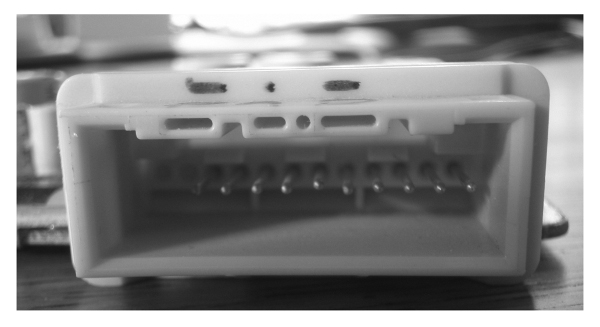
Figure 29. Air bag circuit board connector.

Figure 30. Stove-top design and mistake-proofing.
This third example helps to resolve these sorts of misspecification of data, errors that can occur due to erroneous data, and the rework that is required to reenter data if, indeed, the error is ever discovered. Figure 31 shows an Excel spreadsheet created to demonstrate various mistake-proofing devices with varying degrees of effectiveness. Upon clicking the button labeled “Weak Poka Yoke,” the dialog window in Figure 32 appears. This dialog gives visual cues about how data should be entered. For example, parentheses are displayed so the user would likely infer they need not type parentheses (resolving one error previously described). In addition, the data-entry fields for the phone number data are separated into three boxes proportionally dimensioned to indicate which boxes should contain three digits and which should contain four digits. This data entry window, however, allows many mistakes, including typing too many digits and typing letters. Typographical errors are possible even with dedicated, motivated, and conscientious workers and would be allowed by this version of the software.
An improved data-entry screen is displayed when the “Moderate Poka Yoke” button is clicked (see Figure 33). This display is similar to the previous dialog window, except its enhancements include the detection of letters and when the number of digits exceeds the allowable number for each data field. However, the program does nothing to correct mistakes or prevent erroneous data from being entered into the data system. The final version of the data-entry form, additionally, upon detecting alphabetic characters, displays a message and erases those invalid letters (Figure 34), and once the number of digits entered into a particular field reaches the maximum allowable, the program prevents typing additional characters and displays a message alerting the user when excess characters have been entered. This might signal when two keys were inadvertently struck simultaneously so that the error could be corrected. Last, this data-entry form checks the validity of area codes once the third numeric digit has been entered into the area code field. If the area code typed is not valid, then a message is generated and the data in the area code field is cleared.
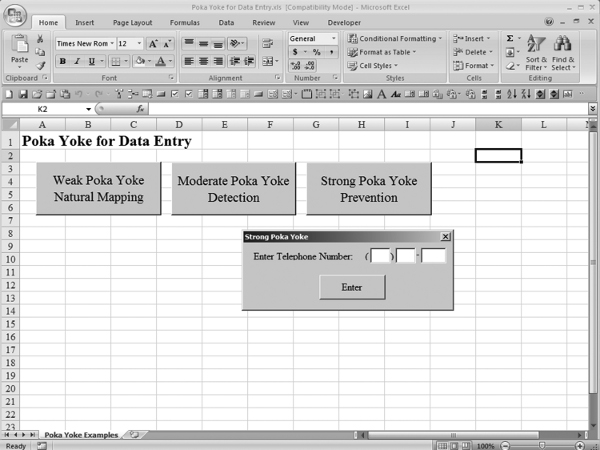
Figure 31. Data entry mistake-proofing.
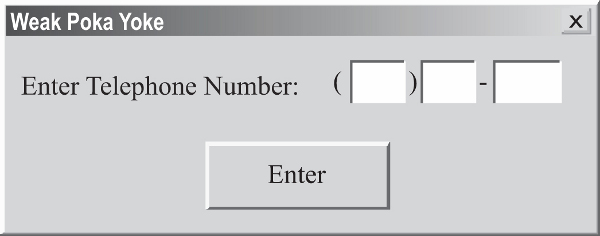
Figure 32. Weak poka yoke dialog window.
The sequence of three data entry screens demonstrates mistake-proofing schemes with varying effectiveness. At its least effective, mistake-proofing provides visual cues but no physical barriers to creating errors. At its most effective, mistake-proofing physically prevents mistakes, such as is the case with the circuit board connector and the computer program that prevents typing an area code that does not exist. Thus, although we said at the beginning of this chapter that the ideal goal of mistake-proofing devices is to prevent errors from occurring, we have seen that sometimes mistake-proofing devices only signal when errors have been or are about to be made.
While we should strive toward mistake-proofing mechanisms that physically prevent mistakes, we might ask if there is such a thing as a mistake-proofing device that is guaranteed to prevent mistakes 100% of the time. To contemplate this question, we will use the circuit board as an example, since it presents physical barriers to making errors and it seems to be very effective. Can it prevent errors 100% of the time? The answer is no for the following reasons:
- The wrong connector might have been installed on the circuit board.
- The wrong wiring harness could be installed in the car, which would allow the wrong circuit board to be installed in the vehicle.
In the second instance, two mistakes would need to be made to create a defect: The wrong wiring harness would need to be installed and an operator would need to select an incorrect circuit board that corresponded with the wrong wiring harness. The probability of both mistakes being made should be much less than the probability of making one mistake, which is all that is needed without any mistake-proofing. If mistake-proofing was used with the installation of wiring harnesses, then the probability of a defect would be reduced further. But we can see that the answer to our question is likely no, mistake-proofing devices are never 100% effective.
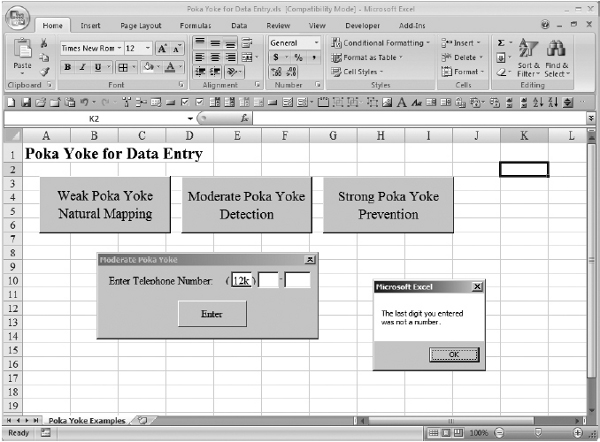
Figure 33. Moderate poka yoke dialog window.
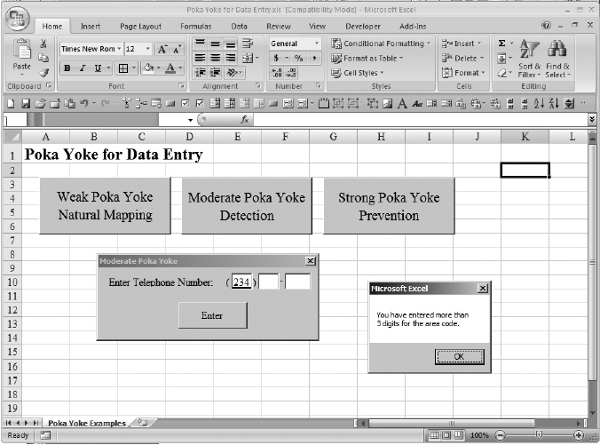
Figure 34. Strong poka yoke dialog window.
Mistake-proofing is aimed at reducing defects, which clearly identifies which of the seven deadly wastes it is intended to primarily address. However, mistake-proofing also reduces cost because of less rework and scrap, reduces lead time because goods do not need to go through additional rework steps or need to be restarted into production, reduces transportation and handling due to rework, and reduces inventory of the parts going through reprocessing.
Exercises
- Look for mistake-proofing devices in your day-to-day experience. In addition, look for situations where mistake-proofing devices could be used to an advantage. How would you design such devices? How effective would they be?
- Look for opportunities to apply mistake-proofing in the processes you encounter on a day-to-day basis and, in particular, those in your workplace.
- Consider the process that was mapped in response to the problem at the end of chapter 2. Suggest how visual tools might be helpful in eliminating defects and saving time and effort.
